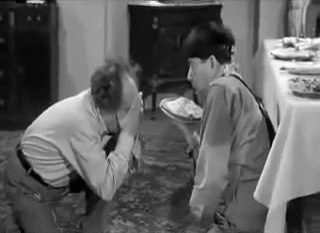Paid search is a powerful way to reach consumers, especially as the algorithms behind them do an ever increasing job of showing searchers the most relevant ads. Relevancy in advertising is the key to creating a consumer action. And just like any marketing channel, we judge the success of paid search campaigns in a pretty simple way—conversions. Ultimately we need to demonstrate to clients that paid search creates generates some sort of tangible benefit. But what if the paid search campaign is creating no conversion?
Think of a brick and mortar store: customers are entering the front door of the store and looking around, but they aren’t buying. What should you do?
This is a simple analogy and question that I sometimes use with clients to put some perspective around paid search campaign conversions, or lack thereof. You know there are customers out there who are interested in what you have to offer, since people are performing searches, seeing your ads, clicking on them and coming to your site. But for some reason they are not buying your widget or signing up for your newsletter. A click on a paid search ad is the stream of customers knocking on your door from the analogy above.
It is your site that is ultimately responsible for converting customers. If you are concerned that there are not enough conversions, should you shut off the stream of customers knocking on your door? Or should you look into how your site performs? If no more customers are walking in your door, you’ll certainly have zero conversions.
But a client may assume the paid search campaign is not adding value, and may even suggest turning off or pausing the campaign. There are many factors involved with a client in deciding to what marketing channels to use, and when to stop. But like any initiative, troubleshooting is a must. Here are a few simple suggestions that can help you super charge your conversion.
Are you really speaking to your customer?
Does your landing page provide the right information to the consumers? Make sure the content on the landing page answers the questions the consumes have in their minds as they come to your site. The search query they are using reveals a lot about what they are thinking and what they are looking for. The content on your site needs to address customer issues and wants.
Supportive keyword research can also reveal where in the buying funnel a consumer is—are they at the top of the funnel, gathering information, or are they further along and ready to buy? Those two customer types need to be talked to differently, as they will have slightly different concerns.
Is the call to action clear?

This should be a no-brainer, but it is surprising how many pages lack a clear call to action. When a consumer comes to the landing page, make sure it’s clear what they should do next. Clearly map the best action each type of customer should take, then make sure it’s clear. Don’t shove it in their face like pie smash, but make sure they can’t miss it.
Are you targeting terms at the right time?
Keyword trend during a year, and for some industries, they trend wildly. (See How to Find Keyword Trends and Why They are Important.) This becomes important in how paid search campaigns perform over time. If a keywords begins to trend down, it will generate less traffic—and less conversions—due to the natural ebb of that keyword. That is not a sign of a bad paid search campaign, that is just the market. Check the trends of the keywords you target. If they are in a natural downward flow, then it’s time to create new AdGroups or a whole new campaign that targets terms that are popular right now.
Can a customer easily scan your landing page?
Think about the way you surf the web. Your in a hurry, you want to find the thing you are looking for quickly. The people that come to your site act in the same way. People want information fast. Look at the stats for your landing page, and look at the average time spent on that page. That”s how much time, on average, you have to make your case. The page needs to be easily scannable so people can assess if they found what they are looking for.
Yes, all paid search campaigns can be optimized to be more effective, but shutting off a dedicated stream of consumers to your web site is not the answer to a conversion problem.



